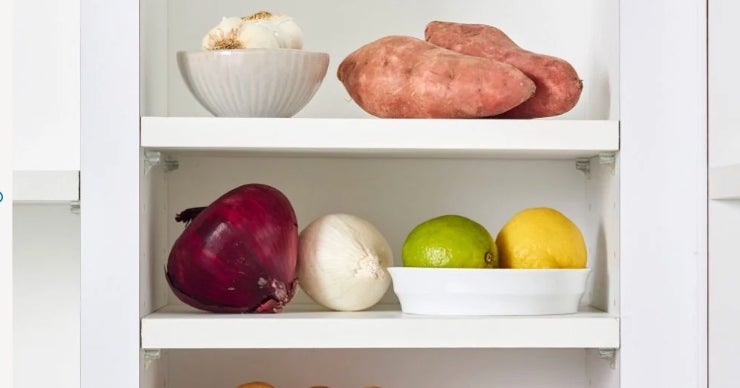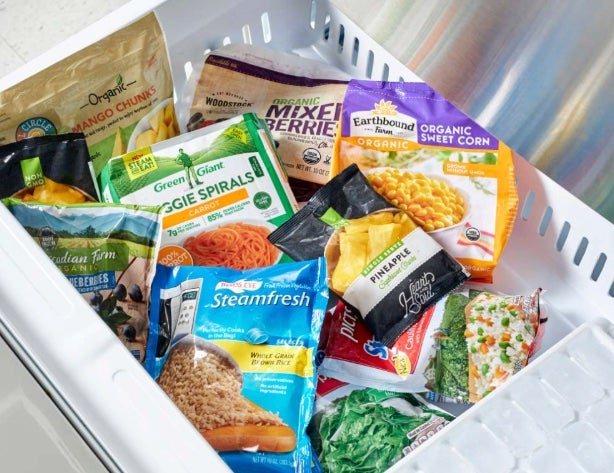
How to Give Your Kitchen a Whole-Food, Plant-Based Makeover
For most people, goingwhole-food, plant-baseddoesn’t require a complete fridge and pantry overhaul. You’ll continue to use staples from your local grocery store, including fresh and frozen produce, dried and canned beans, dried pasta and grains, herbs, spices, condiments, sauces, and dips. But some things will change. Here’s a breakdown of what to toss, what to keep, and what to stock up on when going whole-food, plant-based (WFPB).
For specific brands that we recommend for convenience foods such as vegetable broths, crackers, breads, and more, check out ourWhole-Food Vegan Grocery List.
First Things First: What to Toss
We recommend getting rid of allanimal productsandhighly processed junk foods. Be ruthless. With those unhealthy foods no longer at your fingertips, you can’t mindlessly reach for them. This will also create space for more nourishing whole plant foods you’ll be bringing into your daily life.
White bread, white pasta, white rice
Cooking oils, oily salad dressings and sauces, margarine
Dairy products (cheese, milk, yogurt, butter)
Eggs
Highly refined sweeteners (pure cane sugar is OK to keep for sparing use in sauces and desserts)
Meat, poultry, and seafood
The Well-Stocked WFPB Kitchen: Your Plant-Based Pantry List
Once you’ve cleared away the animal products and highly processed foods, take a look at what’s left. You may only need to fill some gaps to have a well-stocked WFPB kitchen. Using the lists below as a guide, take stock of your pantry, freezer, and refrigerator, and make a list of what’s missing. You don’t need to buy everything on your first shopping trip. Use your judgment, choose what you’ll enjoy, and get started.
Pantry
(Tip: When shopping for canned foods, choose low-sodium or no-salt-added options.)
Aluminum-free, low-sodium baking powder (baking powder can be surprisingly high in sodium)
Applesauce (unsweetened)
Arrowroot powder or cornstarch (for thickening sauces)
Assorted canned and/or dried beans: black beans, chickpeas (garbanzo beans), kidney beans, white beans, lentils
Canned tomato products: whole, diced, and crushed (including seasoned and fire-roasted varieties); tomato sauce; tomato paste
Flaxseed meal(mixed with water, it makes a brilliant egg replacer)
Flours: whole wheat flour, white whole wheat flour, whole wheat pastry flour, oat flour, all-purpose flour (AP flour may be used sparingly in recipes)
Hot sauce, such as Tabasco
Jarred roasted red peppers
Low- or no-sodium vegetable broth
Natural sweeteners: pure maple syrup, brown rice syrup, fresh dates, pure cane sugar (use sparingly)
Nuts and seeds: almonds, raw cashews, walnuts, peanuts, pepitas*
Oil-free pasta sauces
Popcorn kernels for air-popping
Soy sauce and/or tamari
Unsweetened whole grain cereals: shredded wheat, rice puffs, corn puffs, muesli
Assorted vinegars: apple cider, rice, balsamic, red and white wine varieties
Assortedwhole grains: brown rice, quinoa, steel-cut or rolled oats, wheat berries, millet
Whole grain crackers: rye crispbreads, whole wheat crackers, brown rice snaps
Assortedwhole grain pastas and noodles: whole wheat spaghetti and couscous, Thai-style brown rice noodles, lentil pasta

Fresh Pantry
Garlic
Fresh ginger
Lemons and limes
Onions and/or shallots
Potatoes, sweet potatoes
Tomatoes

Freezer
Frozen Veggies
Frozen artichoke hearts
Frozen carrots
Frozen corn
Frozen peas
Frozen spinach
Frozen stir-fry blends
Frozen Fruits
Frozen blueberries
Frozen cranberries
Frozen mixed berries
Frozen mango
Frozen peaches
Frozen pineapple
Frozen strawberries
Frozen Cooked Grains
Plain brown rice
Quinoa

Refrigerator
Condiments: mustard, ketchup, oil-free barbecue sauce, pure fruit preserves
Dips and sauces: oil-free hummus, fresh salsa
Assortedfresh fruit(some presliced for instant access)
Assorted fresh vegetables (some presliced for instant access)
Miso paste (for adding umami flavor without meat)
Natural-style nut and seed butters: peanut butter, almond butter, tahini
Unsweetened, unflavored plant milk, such as almond, soy, cashew, or oat (The fewer the ingredients, the better. For brands we like, seeYour Whole-Food Vegan Grocery List: Oil-Free Breads, Sauces, and Other Go-To Products.)
Tofu: extra-firm and silken (Tip: Silken tofu, which is great for creamy desserts and sauces, is often sold in aseptic packaging in the vegetarian or natural foods aisle, near the shelf-stable plant milks.)
Whole grain bread and tortillas, corn tortillas
Spice Rack
Basil
Bay leaves
Black peppercorns
Cayenne pepper and/or chipotle chili powder
Mild chili powder
Cilantro
Crushed red pepper
Curry powder
Dill
Garlic powder (not garlic salt)
Ground cinnamon
Ground cumin
Ground ginger
Italian seasoning
Marjoram
Nutritional yeast
Whole nutmeg
Onion powder
Oregano
Paprika and/or smoked paprika
Parsley
Sage
Sea salt
Turmeric
Ready to get started? Check out Forks Meal Planner, FOK’s easy weekly meal-planning tool to keep you on a healthy plant-based path. To learn more about a whole-food, plant-based diet, visit our Plant-Based Primer.
